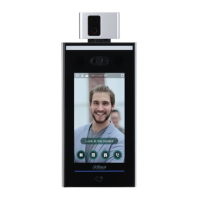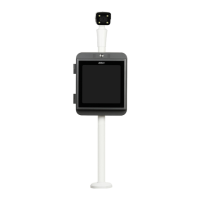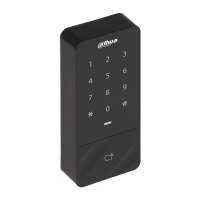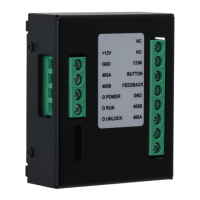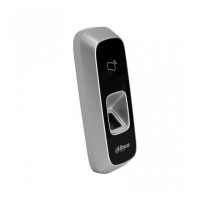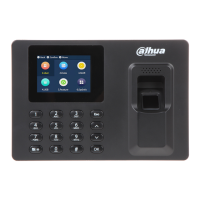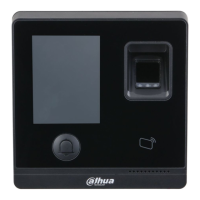26
Name Description
Recognition the wider range of the profiles will be recognized.
Pupillary Distance
Pupillary distance is the pixel value of the image between the centers of
the pupils in each eye. You need to set an appropriate value so that the
access controller can recognize faces as needed. The value changes
according to the face sizes and the distance between faces and the lens.
The closer the face is to the lens, the greater the value should be. If an
adult is 1.5 meters away from the lens, the pupillary distance value can
be within 50 to 70.
Recognition Timeout
When a person who does not have the access permission stands in front
of the access controller and gets the face recognized, the controller will
prompt that face recognition failed. The prompt interval is called
recognition timeout.
Recognition Interval
When a person who has the access permission stands in front of the
access controller and gets the face recognized, the controller will prompt
that face recognition succeeded. The prompt interval is the recognition
interval.
Invalid Face Promp
Interval
When a face has no access permission stands in front of the access
controller, the controller will prompt that the face is invalid. The prompt
interval is invalid face prompt interval.
Anti-fake Threshold
This function prevents people from unlocking by human face images or
face models. The larger the value is, the more difficult face images can
unlock the door. The recommended value range is above 80.
Temperature
Monitoring
Set whether to enable the body temperature monitoring.
Temp Unit: Select a temperature unit.
Temp Rect: Set whether to display the temperature monitoring box
or not.
Temp Monitoring Distance (cm): The value is 0 by default. Set other
values to enable temperature monitoring within a defined distance.
80 cm is recommended.
Temp Threshold (°C): Set the temperature threshold. The monitored
body temperature will be judged as high temperature if it is greater
than or equal to the set value.
Temp Correction Value: This parameter is for testing. The difference
of the temperature monitoring environment might cause the
temperature deviation between the monitored temperature and the
actual temperature. You can select multiple monitored samples for
testing, and then correct the temperature deviation
parameter a
ccording to the comparison between the monitored
temperature and the actual temperature
monitored temperature is 0.5 °C lower than the actual temperature,
the correction value is set to 0.5 °C; if the monitored temperature is
0.5 °C higher than the actual temperature, the correction value is set
to -0.5 °C.
Only the access controller with a temperature monitoring unit supports
this parameter.

